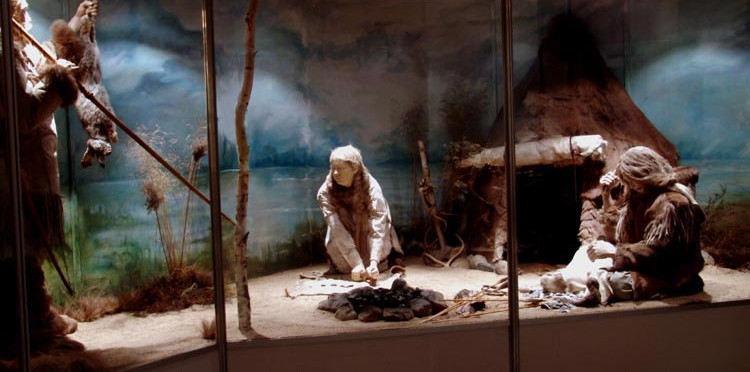Exhibitions
Departments
OLD STONE AGE
Reindeer hunters
The last several hundred millennia in Greater Poland witnessed alternating cool periods, related to successive glaciations, and transient spells of warmer weather. During one of such warmer spells, the Neanderthal man may have reached this area to stay only briefly. However, only towards the end of the last glaciation, about 15 000 years ago, because of climate warming and the melting and retreating of the continental ice sheet, did conditions supportive of human settlement emerge. The area lying in front of the ice sheet developed tundra-type vegetation (mosses, lichens, shrubs, dwarf birches) followed by animals; soon man settled there as well. The earliest settlers came to Greater Poland about 13 000-12 000 years BC, probably from the west, close on the heels of reindeer, migrating along the head of the ice sheet. For the next several millennia, known as the Final Paleolithic, reindeer hunting seasons set the rhythm of life of humans, who are called tundra hunters. They led a nomadic life, trekking across vast expanses of land in large groups capable of organizing collective hunts, and pitched their camps along the migration routes of reindeer.
The exhibition presents the reconstruction of a camp of reindeer hunters from about 12 000 years ago (or 10 000 years BC) located between two lakes, on the route of reindeer migrations when a cold climate prevailed. The reconstruction follows the results of excavations carried out at Wojnowo, Kargowa district.

| <Home |
Mesolithic>> |
Nasza strona internetowa używa plików cookies (tzw. ciasteczka) w celach statystycznych, reklamowych oraz funkcjonalnych. Dzięki nim możemy indywidualnie dostosować stronę do twoich potrzeb. Każdy może zaakceptować pliki cookies albo ma możliwość wyłączenia ich w przeglądarce, dzięki czemu nie będą zbierane żadne informacje. Dowiedz się więcej jak je wyłączyć. OK, Rozumiem


